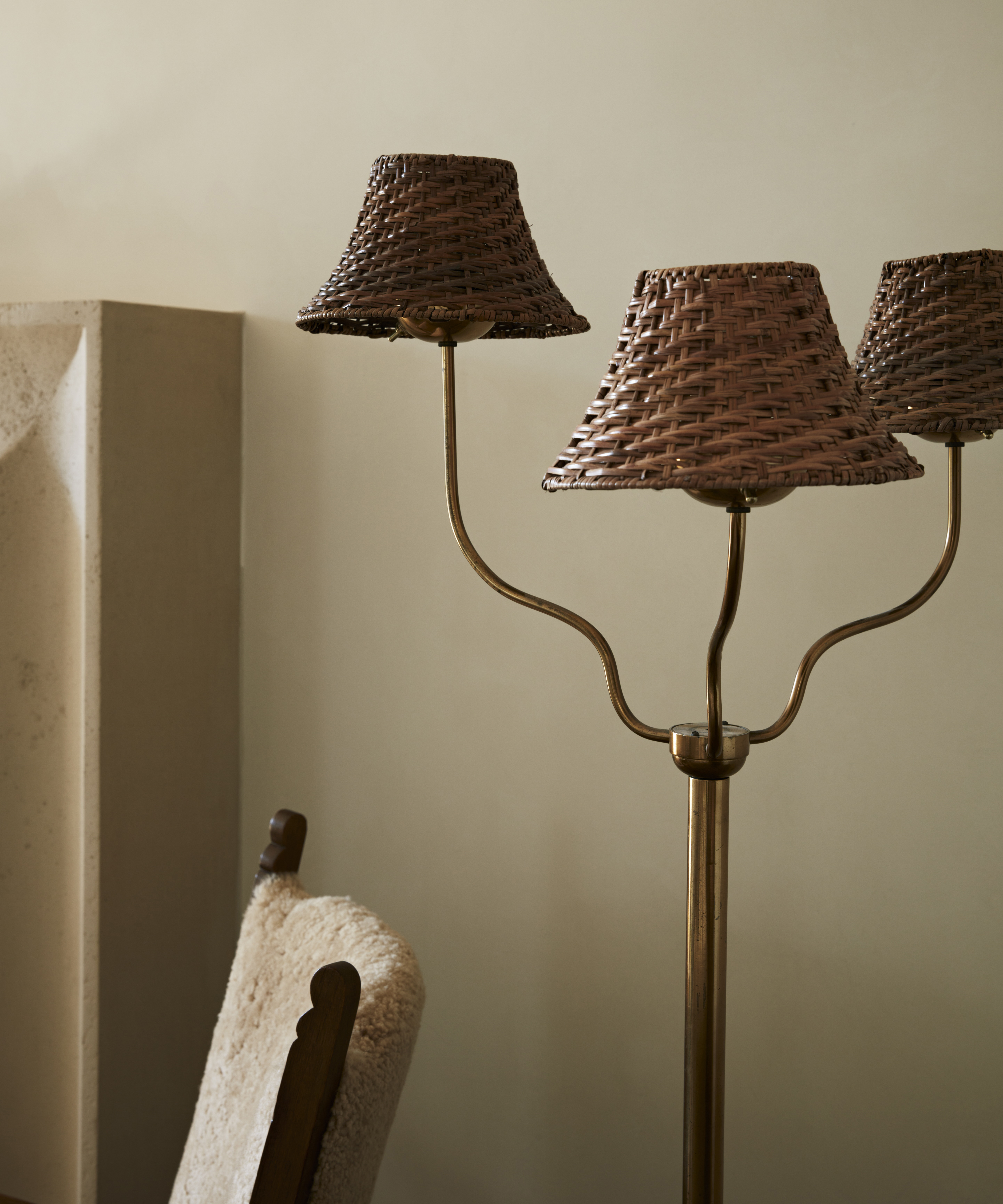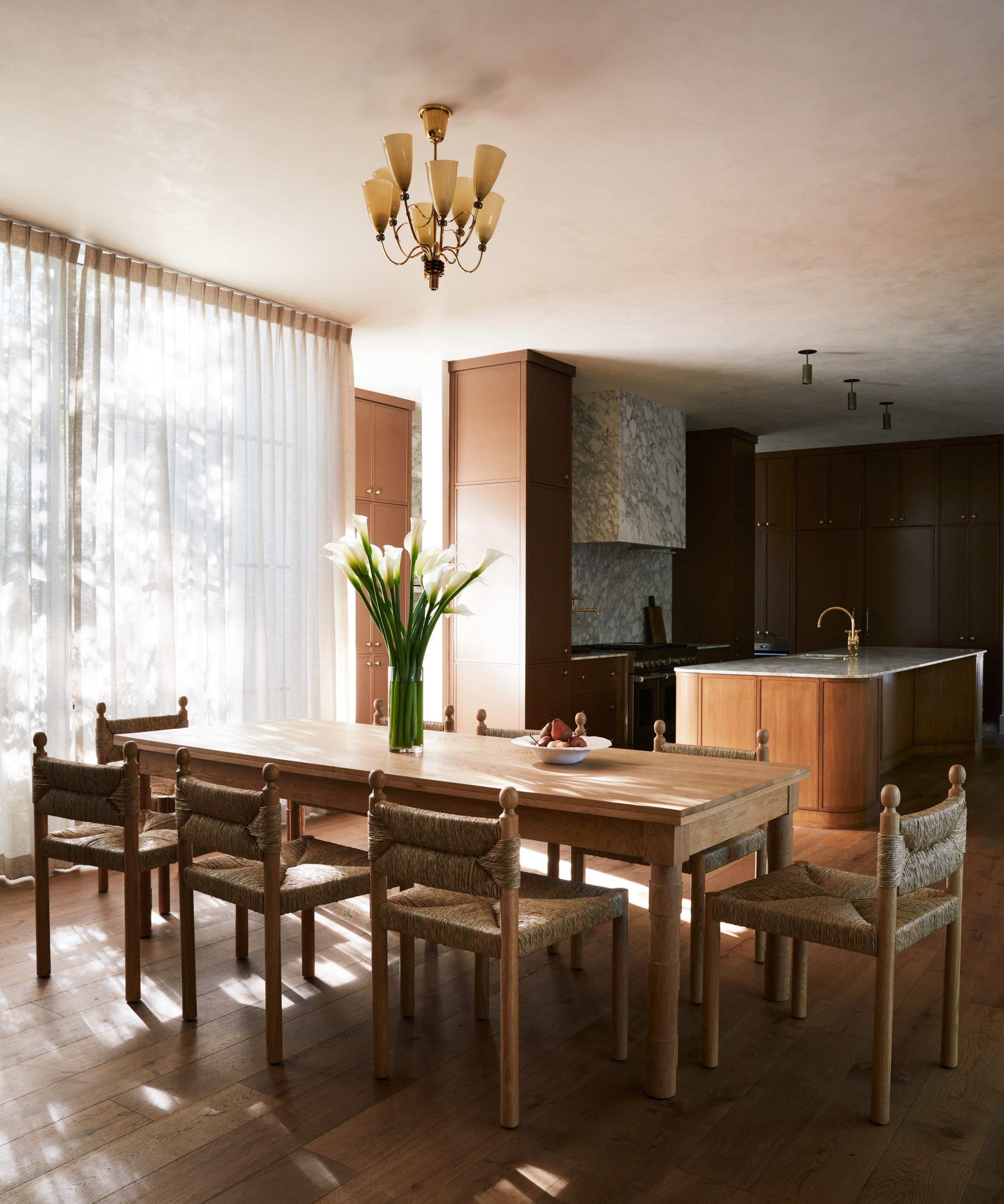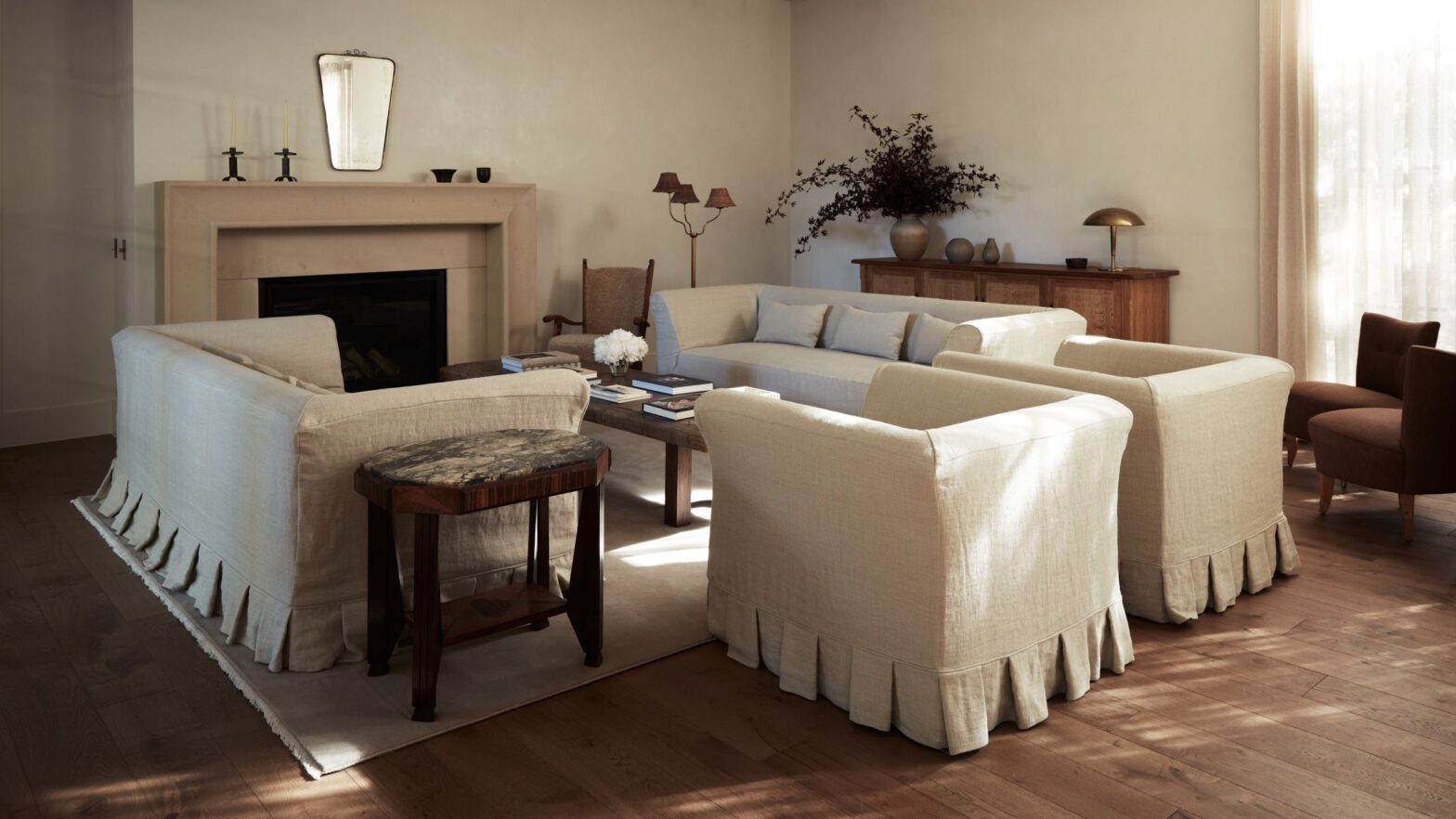Interior designer Molly Kidd is one of Homes & Gardens' new By Design editors-in-chief, sharing her thoughts on decor through her lens of soft lighting, vintage pieces and a sepia-toned color palette. Check out the rest of her articles Here.
Almost ten years ago, I made a quiet but firm promise to myself and my clients: Each project would create a thoughtful balance between new and old – half new, half vintage. This 50/50 commitment has evolved over time (today it often feels more like 80/20, with the majority being antique).
It was neither an interior design trend nor a marketing strategy. It was simply what felt right – ethically, aesthetically and emotionally. I wanted the homes I designed to reflect a deeper kind of beauty: one that wasn't just based on what was new or now, but celebrated the richness of what came before. Sustainability wasn’t just a checkbox. It was a mindset, a rhythm, a respect for the stories already embedded in worn wood, sun-bleached fabrics and brass patinated by decades of touch.
Over the years, this 50/50 philosophy has become a natural part of my creative process. In most projects, the ratio changes – a room may be 80% vintage – but the guiding principle remains: every home should combine the soul of the past with the freshness of the present.
At Molly Kidd Studio, sustainability doesn't mean sacrifice. It means sensitivity. We do not pursue minimalism for aesthetic reasons or maximalism for dramatic reasons. We strive for longevity. Beauty that lasts. Pieces that endure not only in their structure, but also in their mood. I will only put a piece in a home if I can imagine it eventually ending up in an antique shop.

(Image credit: Tim Lenz/Design by Molly Kidd Studio)
Choosing vintage isn't just good for the planet – it's also good design. A vintage cabinet offers proportions, weight and craftsmanship that are rarely replicated in modern manufacturing. Like fast fashion, fast interiors lack originality, patina and personality. An antique Danish sideboard can brighten up a room with too many new pieces, ground a room and whisper: This didn't come from a box. That came from somewhere – usually Europe.
Since I believe in sustainability at every level, I also pay attention to the region when purchasing. Whenever possible, I shop in the city or state where the project takes place. It's part ecological, part emotional: giving back while owning the story. A handcrafted bench from a local artisan in Montana, a stack of French dining chairs from a flea market in Texas—these regional pieces have a charm that makes a space feel connected, not just styled.
This pillar extends far beyond furniture. When I go into a renovation, I don't try to delete something, I try to preserve it. Original flooring, millwork, lighting or pieces of furniture worth keeping will be preserved and guide the new chapter we tell.
Good design doesn't mean starting from scratch, even with a new building. It means seeing the land and leaving an FMD footprint for generations to come. Maintaining the basic components of a home not only reduces waste, but also creates character that cannot be replicated with entirely new materials. That quiet door panel or window latch from the 1930s that we don't want to replace – that's where the soul lives.

(Image credit: Tim Lenz/Design by Molly Kidd Studio)
The 50/50 promise is more than a ratio – it is my design ethos. It guides me in sourcing, layering and working with clients who value the mix of elegance and down-to-earth. That's why a project might include a custom sofa paired with a 100-year-old farmhouse table, or why I scour thrift stores in upstate New York for a vintage mirror to complement an otherwise modern powder room.
Clients often ask, “How do you make a new home feel like it’s always been there?” The answer almost always lies in vintage style – in the stories we carry, in the balance between fresh upholstery and antique chairs, between modern lighting and antique brass hooks. When a home is completely filled with new pieces, you immediately notice that it lacks depth and character. My goal is always to create spaces that feel timeless, homes that you can't quite tell when they were designed.
Because in the end, a well-designed space remains. He remembers. It's evolving. And the best design decisions – like the best furniture – are the ones that stand the test of time.
